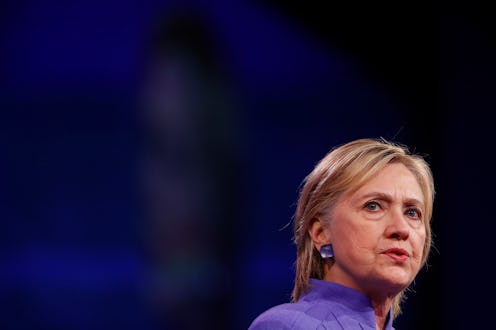News
7 Key Excerpts From The FBI's Clinton Email Report
On Friday, the FBI released the findings of its criminal investigation into Hillary Clinton’s use of email during her time as secretary of state. Although the bureau determined that Clinton didn’t break the law, FBI director James Comey nonetheless said that she’d been “extremely careless” with her electronic communications at the State Department. If you’d like a better idea of exactly what Comey meant by that, here are some excerpts from the FBI's Hillary Clinton email investigation that you should read.
Much of the discussion involves the steps Clinton may or may not have taken in order to avoid making her communications subject to Freedom of Information Act (FOIA) requests. Others involve how she handled classified information and the devices she used. Perhaps the biggest revelation is that, in at least one instance, Clinton’s emails appear to have been hacked, though it’s unclear if this was something she could have prevented.
As with just about every revelation related to Clinton’s emails, this isn’t likely to change any minds. Those who already believe Clinton is a lying criminal will have their beliefs confirmed by Friday’s release, while those who think the discussion over Clinton’s email use is much ado about nothing will probably continue feeling that way despite these documents.
Nevertheless, here are some of the more notable findings from the document dump:
17,000+ Clinton Emails Weren't Given To The FBI
The bureau found over 17,000 “work-related and personal” emails from Clinton’s private server that Williams & Connolly, Clinton’s legal representation, didn’t give to the FBI last year when it handed over her email server. (Note: The description in the tweet above incorrectly states that all 17,000+ of said emails were “work-related;” some, by the FBI’s account, were personal.)
Colin Powell Told Clinton How To Avoid FOIA Requests
Former Secretary of State Colin Powell warned Clinton against sending emails from a Blackberry, as that would make them “official record[s] and subject to the law” — that is, FOIA requests. “I got around it by not saying much and not using systems that captured the data,” Powell told Clinton of his practices at the State Department.
Clinton Didn’t Know What “C” Meant
Some State Department communications were marked “C,” for “CONFIDENTIAL.” That’s just one of several levels of classification the department used, but according to the FBI’s report, Clinton said she didn’t know what “C” meant and treated all classified documents carefully regardless of classification level.
Someone Wiped Clinton’s Emails After An Article About Them
The New York Times first reported in March 2015 that Clinton used a personal email server at the State Department. That same month, somebody — it isn’t clear who — told the FBI that they had an “oh sh*t” moment and deleted a certain archive of Clinton emails.
A Clinton Staffer’s Email Was Hacked
This one is tantalizing but vague: Apparently, the email account of an unnamed Clinton staffer was compromised and accessed by an unauthorized party at some point. They “browsed email folders and attachments” — but unfortunately, that’s as specific as it gets.
Clinton May Not Have Considered All Drone Strikes Talks To Be Classified
The wording is tricky here, but Clinton’s comments indicate that she didn’t consider every conversation involving possible drone strikes to be classified, but rather “part of the routine deliberation process.”
Clinton Could Have Sent Emails From 13 Different Devices
Yet another excerpt that has a big caveat, the FBI identified 13 devices from which “potentially were used to send emails” from Clinton’s private server. The crucial word, of course, is “potentially.”
